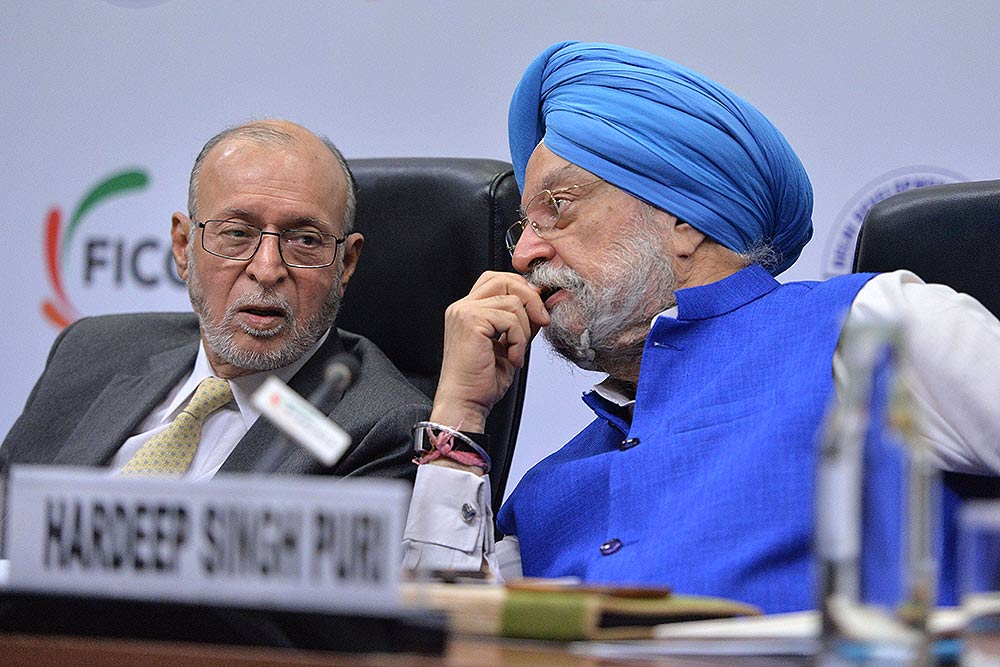Despite setbacks due to the pandemic, India remains on track to be the fastest-growing major aviation market. With traffic expected to double in the coming decades, Embraer sees great potential for its new E2 family of aircraft. Let's find out more.
Focus on India
In an interview with Simple Flying, Embraer's Head of Commercial Aviation for Asia-Pacific, Raul Villaron, spoke about the manufacturer's focus on the Indian market. Currently, only one airline in India operates the E-jet family, regional carrier Star Air (five planes). However, the future could hold more sizeable opportunities.
One of the primary reasons why the E2 works so well for the Indian market is because of the economics. The aircraft's lower cost per seat kilometer and better overall operational costs make it a favorable choice for Indian airlines.
The biggest benefit in terms of lower costs comes on routes under 650 nautical miles. This is where the E2 actually offers better per-seat costs than even traditional narrowbodies like the Airbus A320 and Boeing 737s.
Considering many domestic and nearly all regional routes in India fall into this category, the E2 does have a sizeable market to tap into. However, the pandemic might have created a renewed interest in these segments as well.
Airlines like IndiGo, SpiceJet, GoAir, and more quickly started adding new routes to and from smaller cities across India. Additionally, Cities like Jaipur, Agra, Leh, Rajkot, and others saw more frequencies from major hubs as travelers looked to resume non-essential travel.
However, airlines quickly faced an issue on these regional routes. While some had enough traffic for either turboprops like the Q400 or ATR72 or narrowbodies like the A320 or 737, several found themselves in between these categories. Since load factors are an important aspect for airlines, this likely caused some frustration.
As more regional routes mature and attract greater traffic, airlines will have to consider investing in regional jets. This is where aircraft like the Embraer E2 fits perfectly. With seating for 100-140 passengers, the E190 or E195 will suitably serve these routes.
New focus
While regional traffic only makes up a small proportion of daily domestic flights, this figure is likely to go up in the coming years. This is thanks to the government's UDAN-RCS (regional connectivity scheme), which offers subsidies to airlines and airport operators to start new routes to and from Tier-2 and 3 cities across India.
The government is serious about expanding air connectivity in the country, with Civil Aviation Misinter Hardeep Singh Puri expecting to see 1,000 new air routes over the coming years. This rising number of routes will require airlines to invest in new aircraft, especially in the underrepresented regional jet segment.
When it comes to securing short-haul traffic, Embraer is confident its jets offer a superior deal. Speaking about the subject, Mr. Villaron said,
"The E2s, because of its economics, can also efficiently replace some turboprops right where speed is a big factor. Now the new fuel burn of the E2s also makes it very competitive against the current generation turboprops in Asia. So I see them [E2] as a good replacement for the large narrowbodies for rightsizing, but also for improving quality of service to turboprop operators."
Flexibility
While it's undoubtedly that the E2 is extremely efficient for short flights, the aircraft is quite flexible in terms of range. The mid-size E190 aircraft has a range of 2,850 nautical miles, which is more than enough to reach any city within India (including islands) and even tap into international markets.
This means airlines operating the E2 will not be tied down to just flying a handful of short routes and could, hypothetically, use the aircraft for domestic operations on all kinds of routes. This would allow airlines to swap equipment and add new routes without purchasing or using other aircraft types.
The feasibility of using the E2 on international routes has been discussed before as well. While the plane can reach cities like Dubai, Doha, Singapore, Kuala Lumpur, and others from India, it is unlikely airlines would use the jet on such routes. Instead, the E2 might be helpful in opening long-and-thin routes to destinations like the Andaman and Nicobar Islands.
Big order?
While we've talked a lot about the potential benefits of the E2 in India, there is yet to be a major order. However, there could be one just around the corner. Last month, regional airline TruJet announced multi-billion-dollar plans to purchase 54 A220s and 54 E2s each. This came after the airline received a huge investment from a foreign asset management fund.
While there has been little news about the order since the announcement in April, we could soon be looking at India's first E2 operator. TruJet plans to base its aircraft out of Hyderabad Airport and will rapidly grow to serve mainline domestic routes and international cities with its fleet.
If these plans finally work out, it's like the E2 will likely be flying domestic and regional services in the coming years. This would definitely set the stage for other airlines to consider the aircraft in the future. For now, keep an eye out for this up-and-coming regional aircraft and the routes it is flying.

देश में एक करोड़ यात्री प्रतिदिन कर रहे हैं मेट्रो की सवारी: पुरी ..

Union Minister for Petroleum and Natural Gas and Housing and Urban Affairs, Hardeep Singh Puri addressing a press conference in ..

Joint Press Conference by Shri Hardeep Singh Puri & Dr Sudhanshu Trivedi at BJP HQ| LIVE | ISM MEDIA ..
(3).jpg)
"I wish a speedy recovery to former Prime Minister Dr Manmohan Singh Ji. God grant him good health," Puri wrote. ..